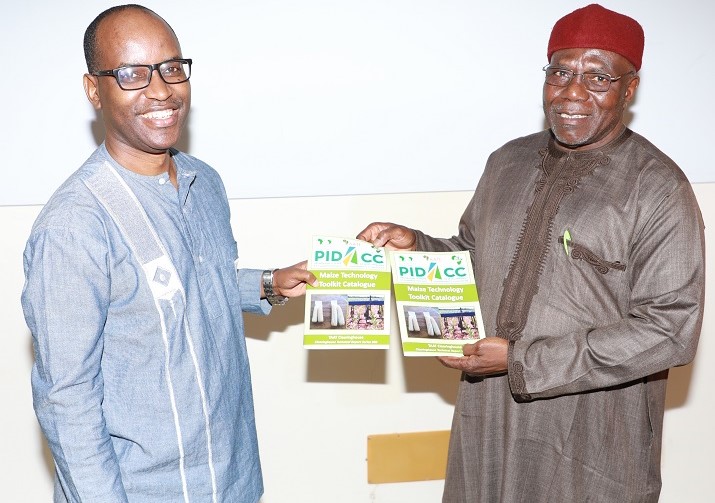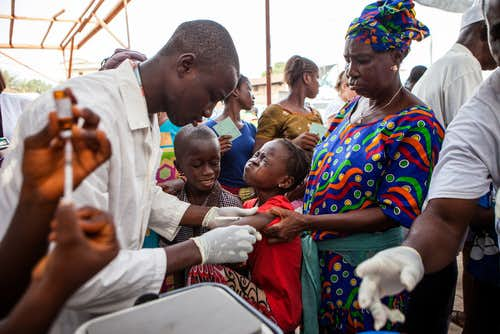
By Greg Odogwu
We are in September now and, naturally, the rains are not relenting.
For many people who live in areas that are susceptible to flooding, this means that the coast is not yet clear. And specifically for the farmers, it is a case of welcoming heavens’ blessings with mixed feelings while keeping their fingers crossed that the rains would pour just in the right quantity; for a little more might just wash away their livelihood.
And for people involved in the fight against climate change, there is no better opportunity to hammer the message home.
It is becoming clearer that climate change exists and will lead not only to gradual changes such as melting glaciers and rising sea levels, but particularly also more frequent and intense weather extremes.
A few days ago, the world was hit by the news that for the first time since 1892, a full-fledged hurricane pounded the Cape Verde islands off the coast of West Africa. But for many Nigerians, it is just enough to look at the unpredictable pounding rains and the floods that follow in their wake, in order to nod in agreement to the reality of a changing climate.
But thank God for technology, the effects of these natural hazards could be mitigated majorly through early warning systems. In Nigeria there is the Nigeria Meteorological Agency (NiMet), whose duty is to churn out the required meteorological information for the country to work with.
However, the truth is that an early warning has no effect without early action. Numerous examples exist to confirm this truth. In 2012, NiMet gave an early warning, but because there was no action to match the information, the following nationwide floods had devastating effects.
Other global examples include Cyclone Nargis (2008) in Myanmar which left more than 130,000 fatalities; Hurricane Katrina (2005) that killed close to 2000 Americans; and the food crisis in Niger (2004-2005) which affected millions of families. All these show how reliable information about expected threats was insufficient to avert a disaster.
In any case, it can be confidently said that this is a good year for Nigeria. Unlike how it had been in the past, the fear of floods has jolted Nigerians into pushing environmental issues straight to the front burner, even if for a season. And the best news is that this is not done haphazardly. It is professionally, efficiently and sweetly executed across the sectors, from the media to the security sectors.
Accordingly, NiMet is at the centre of the push because of its climate-scientific duty to the nation. Its Director General, Dr. Anthony Anuforom, now seems to be like a man on the hot seat. He is always seen taking all manner of weather-related questions from all spectrum of the media. This reminds one of how the country’s national coaches are interviewed and harangued whenever Nigeria is facing international football contests. But in this case, the stake is even higher. Of course, when lives and livelihoods are hanging on a balance, nobody wants a bad news.
A fortnight ago, NiMet inaugurated a six-man inter-agency task team on flood alert to provide timely and adequate data for the control of flood in the country. Dr. Anuforom, who inaugurated the team, said members were drawn from the Nigerian Hydrological Services Agency (NIHSA), the National Emergency Management Agency (NEMA) and NiMet.
The team is expected to intensify frequency of monitoring of rainfall and river levels along rivers Niger and Benue, and provide technical reports to the three agencies. It is expected to liaise closely with Lagdo dam managers to know the exact time of release and volume of water to be released.
The team will also liaise with the African Centre for Geological Application for Management (ACGAM) in Niamey; Niger Basin Authority, Kainji and Shiroro dams’ managers and other similar agencies that can share data in the area around these rivers.
Anuforom said the formation of the team was sequel to the call from the Office of the National Security Adviser (NSA) to increase surveillance on the upper Niger area to mitigate flooding. He said the National Intelligence Agency (NIA) had also alerted the three agencies that Cameroonian authorities would be releasing water from Lagdo Dam between July and November.
“In response to these two letters, NiMet and its sister agency, NIHSA and NEMA agreed that we have to increase our surveillance of those areas. We have to also increase our preparedness in case anything happens and that is why NEMA came into the picture. NiMet has surveillance over rainfall pattern and NIHSA has surveillance over the hydrological side of things at the level of rivers. So, we have agreed to set up a team that will be saddled with the responsibility of daily monitoring of the rainfall pattern and water level all around rivers Niger and Benue.
NiMet had gone a step further to employ numeric weather prediction resources to focus more on the areas bordering rivers Niger and Benue, aside our daily weather predictions,’’ he said.
It will be recalled that at the beginning of the year, NiMet released its 2015 annual seasonal rainfall prediction, predicting slightly above average rainfall for some parts of Nigeria. Sooner had the wet season started than states started witnessing massive flooding. Many people speculated on the issue along the looming release of water from Cameroon’s Lago Dam as it happened before.
The good part of what is happening this year is that the Nigerian and Cameroonian authorities are in an agreement that the dam’s water would be released in installments. The Federal Government responded to the news of the planned release of water from the Lagdo Dam by assuring of its commitment to construct Dasin Hausa Dam in Adamawa State to contain the excess volume occasionally being released by Cameroon.
The Permanent Secretary, Federal Ministry of Water Resources, Mr. Musa Istifanus, said the ministry was making efforts to see that the construction of the dam commenced immediately. This is shamefully belated, but better late than never.
According to Istifanus, the ministry had already completed the construction of Kashimbila Dam on River Kashimbila in Taraba State which would contain 30 per cent of the water from Cameroon while the proposed Dasin Hausa Dam will contain the remaining 70 per cent.
The Ministry of Environment also alerted Nigerians on the consequences of the release of water from the Lagdo Dam and further held a one-day emergency meeting on the matter. Among many other resolutions, it reiterated need for a policy on waste separation and recycling be adopted to reduce flood associated with indiscriminate dumping of waste along drainage, canals and waterways and the need to communicate early warning/forecast to states and local governments.
As Anuforom on a news hour interview on Channels Television on Tuesday night called for a “more holistic and more global” strategy to tackle the threat of floods, one needed little imagination to realize that it is high time that everybody on an individual level entered the fray. It is no longer just a fight for “the government”. It is citizen’s action, as little as it may look, which shall snowball into a humongous national response. Individual/community clearing of drainage and culverts, sandbagging of weak waterways are efforts we can initiate.
All efforts should be intensified and eventually when the year ends, proper stocktaking should be done by relevant stakeholders to determine how to prepare better in the coming year. In places where we cannot afford to build dams, weirs (a barrier across a river designed to alter its flow characteristics) would suffice.
The Ministry of Science and Technology should initiate flood control projects to encourage local innovations. Also, the National Orientation Agency should join the fight because being a central concern for all, climate change has upped the ante for such information management government outfit.











